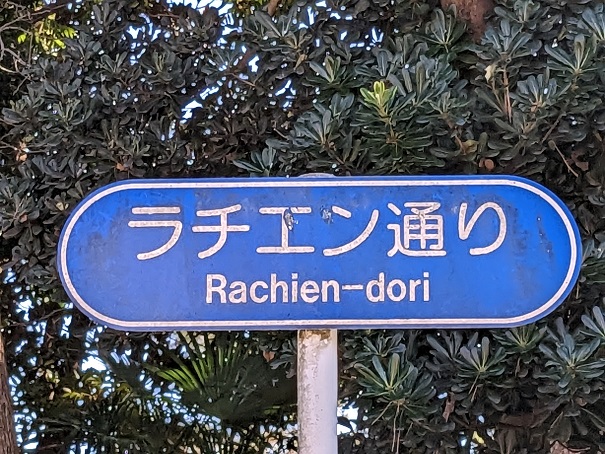Ratjen Street in Chigasaki City
There is a street called Rachien-dori (ラチエン通り) in Chigasaki, Kanagawa Prefecture, running north to south toward Chigasaki Beach between National Route 1 and National Route 134. It was originally the boundary between Kowada Village and Chigasaki Village during the Edo period and became a street during the early days of the Showa period.
The street name translates to "Ratjen Street" where Rachien is the romanized form of ラチエン, the Japanese spelling for Ratjen. The name comes from Rudolf Ratjen (1881 ~ 1947), a German businessman from Hannover, who owned a villa that once stood along the street. |
| Takao Doi's handprint |
 |
| Eboshi-iwa from Rachien-dori |
 |
| Eboshi-iwa from Chigasaki Beach |
 |
| Takeshi Kaiko Memorial House |
Takeshi Kaiko (aka Ken Kaiko) (1930 ~ 1989), one of the prominent Japanese novelists of the post-World War II period, spent his later years in Chigasaki. His house stands along Rachien-dori and is now renovated into a museum named the Takeshi Kaiko Memorial House (開高健記念館). In February 2015, the Chigasaki People's Museum (茅ヶ崎ゆかりの人物館) opened next to the house.
The street name also appears in one of the songs of the prominent Japanese band, Southern All Stars.
* According to the Facebook page of the Chigasaki People's Museum, Ratjen was working for Charles de la Camp, a company selling raxa cloths, at the time he came to Japan.







Comments
Post a Comment